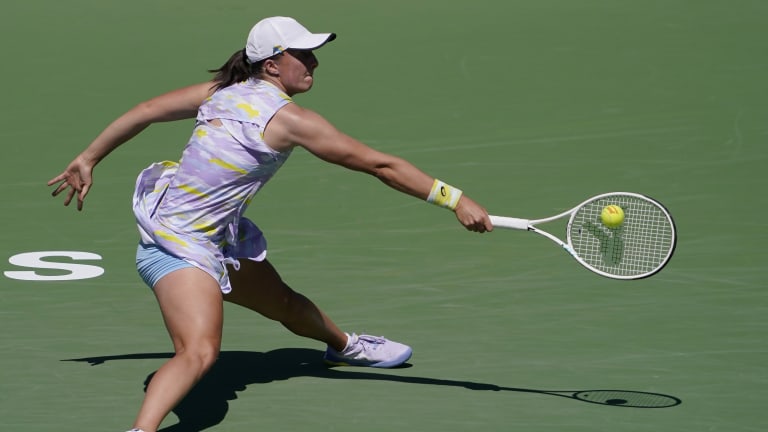Indian Wells, USA
Feeling the Indian Wells heat, Iga Swiatek's competitive instincts carry her past Kerber in first-time clash
By Mar 16, 2022Indian Wells, USA
Carlos Alcaraz and Iga Swiatek reset with Indian Wells wins, as rivals endure their own slip-ups
By Mar 18, 2024Indian Wells, USA
Carlos Alcaraz defeats Daniil Medvedev to defend his Indian Wells title, Iga Swiatek beats Maria Sakkari for women's title
By Mar 17, 2024Indian Wells, USA
Carlos Alcaraz wins second straight Indian Wells title with victory over Medvedev in final
By Mar 17, 2024Indian Wells, USA
From the yellow ball to the crystal ball: What's in store for the future of the BNP Paribas Open?
By Mar 17, 2024Indian Wells, USA
Iga Swiatek beats Maria Sakkari again in BNP Paribas Open final
By Mar 17, 2024Indian Wells, USA
Top 5 Indian Wells Finals, No. 1: Serena Williams d. Steffi Graf, 1999
By Mar 17, 2024Indian Wells, USA
2024 BNP Paribas Open men’s final preview: Carlos Alcaraz vs. Daniil Medvedev
By Mar 17, 2024Indian Wells, USA
Top 5 Indian Wells Finals, No. 2: Rafael Nadal d. Juan Martin del Potro, 2013
By Mar 17, 2024Indian Wells, USA
Who Will Win: Carlos Alcaraz or Daniil Medvedev, 2024 Indian Wells men's final
By Mar 17, 2024Indian Wells, USA
Feeling the Indian Wells heat, Iga Swiatek's competitive instincts carry her past Kerber in first-time clash
“Truth be told, I wasn't really sure what my tactics should be,” admitted the No. 3 seed after advancing past the three-time major winner, 4-6, 6-2, 6-3, at the BNP Paribas Open Tuesday.
Published Mar 16, 2022
Advertising
Advertising

Swiatek has rallied from a set down in all three of her Indian Wells matches thus far to increase her win streak to eight.
© Copyright 2022 The Associated Press. All rights reserved
Advertising

Download the Tennis.com app on your IOS or Android device today!